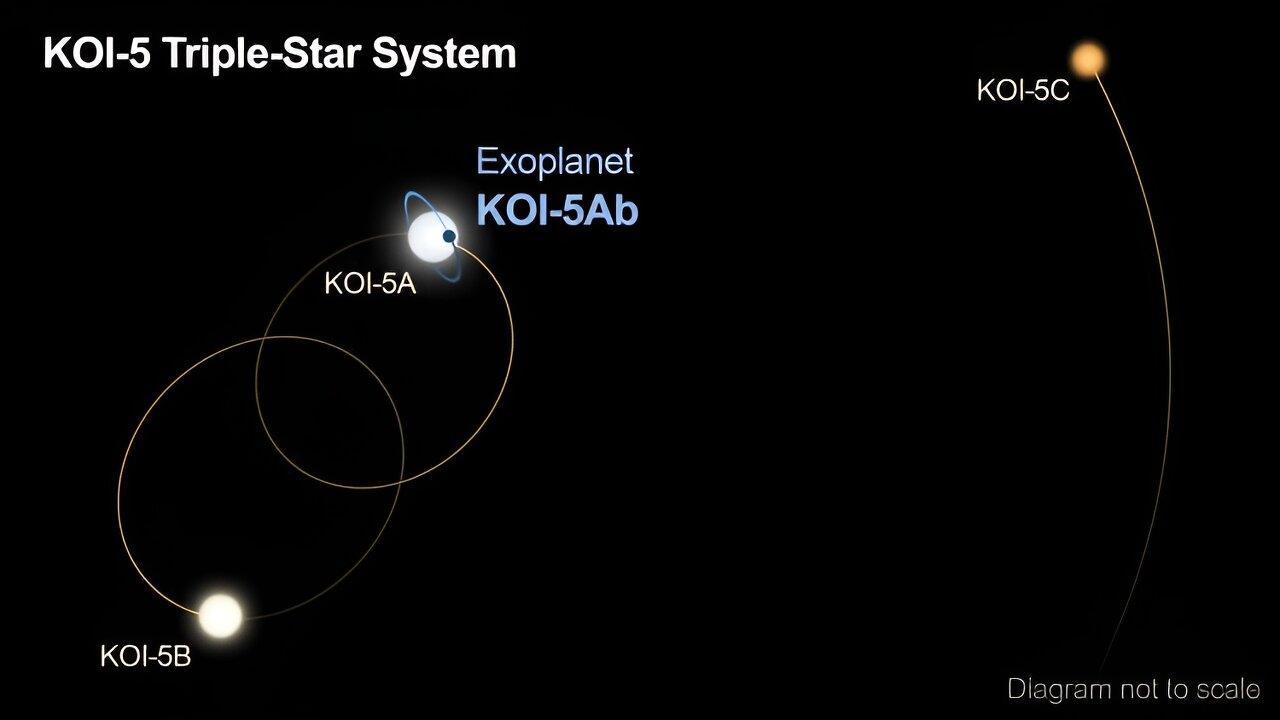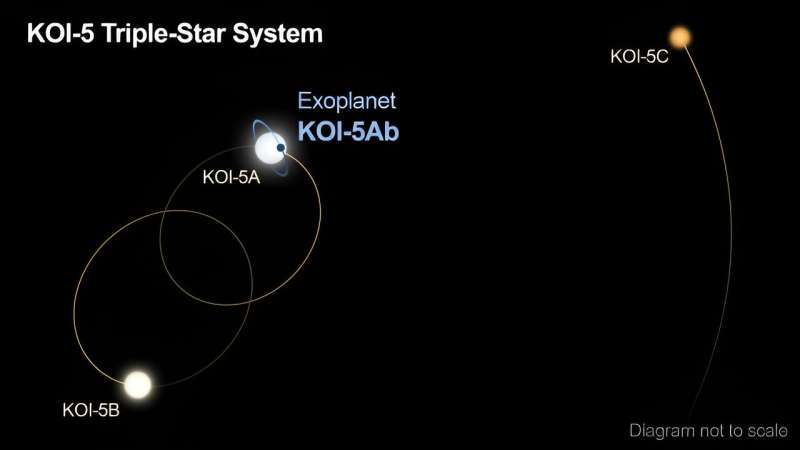

Why is it important to search for exoplanets in triple star systems and how many can we find there? This is what a recent study accepted by Astrophysics & Space Science hopes to address after a pair of researchers from the University of Texas at Arlington investigated the statistical likelihood of triple star systems hosting exoplanets. This study holds the potential to help researchers better understand the formation and evolution of triple star systems and whether they are suitable for hosting life as we know it.
The research is published on the arXiv preprint server.
Here, Universe Today discusses this incredible research with Dr. Manfred Cuntz, who is a physics professor at the University of Texas at Arlington and lead author of the study, regarding the motivation behind the study, the most significant results, the importance of studying triple star systems, and the likelihood of finding exolife in triple star systems.
What was the motivation behind the study?
Dr. Cuntz tells Universe Today, “Ages and metallicity (i.e., the amount of heavy elements = elements other than hydrogen and helium) are fundamental properties of stars, a statement that applies to all stars. Considering that most stars (excluding the sun) are members of higher order systems, the study of stars in triple stellar systems is a natural extension of research focusing on single stars.”
For the study, the researchers conducted a statistical analysis regarding both the ages and metallicities of triple star systems with a total of 27 confirmed exoplanets based on past research, with the number of exoplanets in each system ranging from 1 to 5. The ages of the triple star system, with margins of error, ranged between 20 million years old to 7.2 billion years old. For context, our sun is estimated to be slightly more than 4.6 billion years old.
The metallicities of the star systems, with margins of error, ranged between -0.59 and +0.56, which is often calculated based on the ratio of iron to hydrogen (Fe/H), and is also calculated with the equation X + Y + Z =1, with X being the fraction of hydrogen, Y being the fraction of helium, and Z being everything else (i.e., carbon, oxygen, silicon, iron, etc.).
These values range between -4.5 and +1.0, with stars exhibiting 0, -1, greater than 0, and less than 0, indicating a star is equal in iron abundance to our sun, one-tenth the iron abundance of our sun, greater metal content than our sun, and less metal content than our sun, respectively.
What were the most significant results from this study?
“Two highly significant results have been identified,” Dr. Cuntz tells Universe Today. “First, stars in triple stellar systems are on average notably younger than stars situated in the solar neighborhood. The most plausible explanation is a possible double selection effect due to the relatively high mass of planet-hosting stars of those systems (which spend less time on the main-sequence than low-mass stars) and that planets in triple stellar systems may be long-term orbitally unstable.
“The stellar metallicities of those stars are on average solar-like; however, owing to the limited amount of data, this result is not inconsistent with the previous finding that stars with planets tend to be metal-rich, as the deduced metallicity distribution is relatively broad.”
The distances to the respective triple star systems range between 4.3 and 1,870 light-years from Earth, but only 6 of the 27 triple star systems reside within 100 light-years away. These six triple star systems include Alpha Centauri (4.3 light-years), Epsilon Indi (11.9 light-years), LTT 1445 (22.4 light-years), Gliese 667 (23.6 light-years), 94 Ceti (73.6 light-years), and Psi1 Draconis (74.5 light-years), with the number of total exoplanets (with exoplanet candidates indicated in parentheses) within each system being 3 (2), 1, 1, 2 (1), 1, and 1, respectively.
For context, as of September 2024, the total number of confirmed exoplanetary systems within our cosmos is more than 4,300, which encompasses almost 5,800 exoplanets.
Despite the small number of triple star systems that host exoplanets, what is the importance of studying triple star systems?
Dr. Cuntz tells Universe Today, “Most stars (excluding the sun) are members of higher order systems, especially binaries—and in less common cases, triple stellar systems, and systems of even higher order.
“Therefore, the study of planets hosted by triple stellar systems is a natural extension of the standard approach focusing on planets around single stars. The current study focuses on some of the properties of stars in triple stellar systems, which are also known to host (a) planet(s)—a relatively rare setting. The importance of the current study is to expand our general understanding of star-planet systems.”
For Alpha Centauri, the exoplanet Proxima Centauri b, has been confirmed to be terrestrial (rocky), approximately the size of Earth in both radius and mass, and orbiting within the habitable zone (HZ) of Proxima Centauri, one of the stars that comprise the Alpha Centauri triple star system.
The only other terrestrial exoplanet orbiting within its star’s HZ is Gliese 667 Cc, whose mass and radius is larger than Earth, designating it as a super-Earth.
Given the small number of triple star systems that have exoplanets and even fewer that host terrestrial exoplanets orbiting in their HZ, what is the likelihood of finding exolife in triple star systems?
“The only planet where we know for sure that life does exist is Earth,” Dr. Cuntz tells Universe Today. “However, through both observational and theoretical studies during many decades of committed work, scientists are convinced that exolife is almost certainly real. This statement should also apply to planets in triple star systems.
“However, those planets are typically subject to relatively variable environmental forcings (e.g., variable amounts of radiation received by the stellar components), which is expected to reduce the likelihood of advanced life forms, but should still permit microbial life, especially extremophiles.”
As the number of confirmed exoplanets continues to grow, so should the confirmed number of triple star systems that host exoplanets. When science fiction fans read about multi-star systems, they almost immediately think of the iconic scene in “Star Wars: A New Hope,” in which Luke Skywalker watches two stars setting on the horizon.
While Tatooine was habitable for humans and other interesting life forms, this might not be the case in the real world, as demonstrated by Proxima Centauri b currently being the only Earth-like exoplanet orbiting in its HZ within 100 light-years from Earth.
Therefore, what constraints should scientists put on finding life in triple star systems? Should we instead study their moons, as the film “Avatar” depicted the semi-habitable moon Pandora orbiting a much larger exoplanet within the Alpha Centauri system? Are triple star systems with exoplanets as rare as the statistics show today?
“The search for life outside of planet Earth continues to be a fascinating topic,” Dr. Cuntz tells Universe Today. “Political and societal support for ongoing and future space missions is highly appreciated. We, as scientists, are grateful for the ongoing support by taxpayers around the world, but especially here in the U.S.”
More information:
Manfred Cuntz et al, On the Age and Metallicity of Planet-hosting Triple Star Systems, arXiv (2024). DOI: 10.48550/arxiv.2408.09268
Journal information:
arXiv
Provided by
Universe Today
Citation:
Investigating the statistical likelihood of triple star systems hosting exoplanets (2024, October 2)
retrieved 2 October 2024
from https://phys.org/news/2024-10-statistical-likelihood-triple-star-hosting.html
This document is subject to copyright. Apart from any fair dealing for the purpose of private study or research, no
part may be reproduced without the written permission. The content is provided for information purposes only.